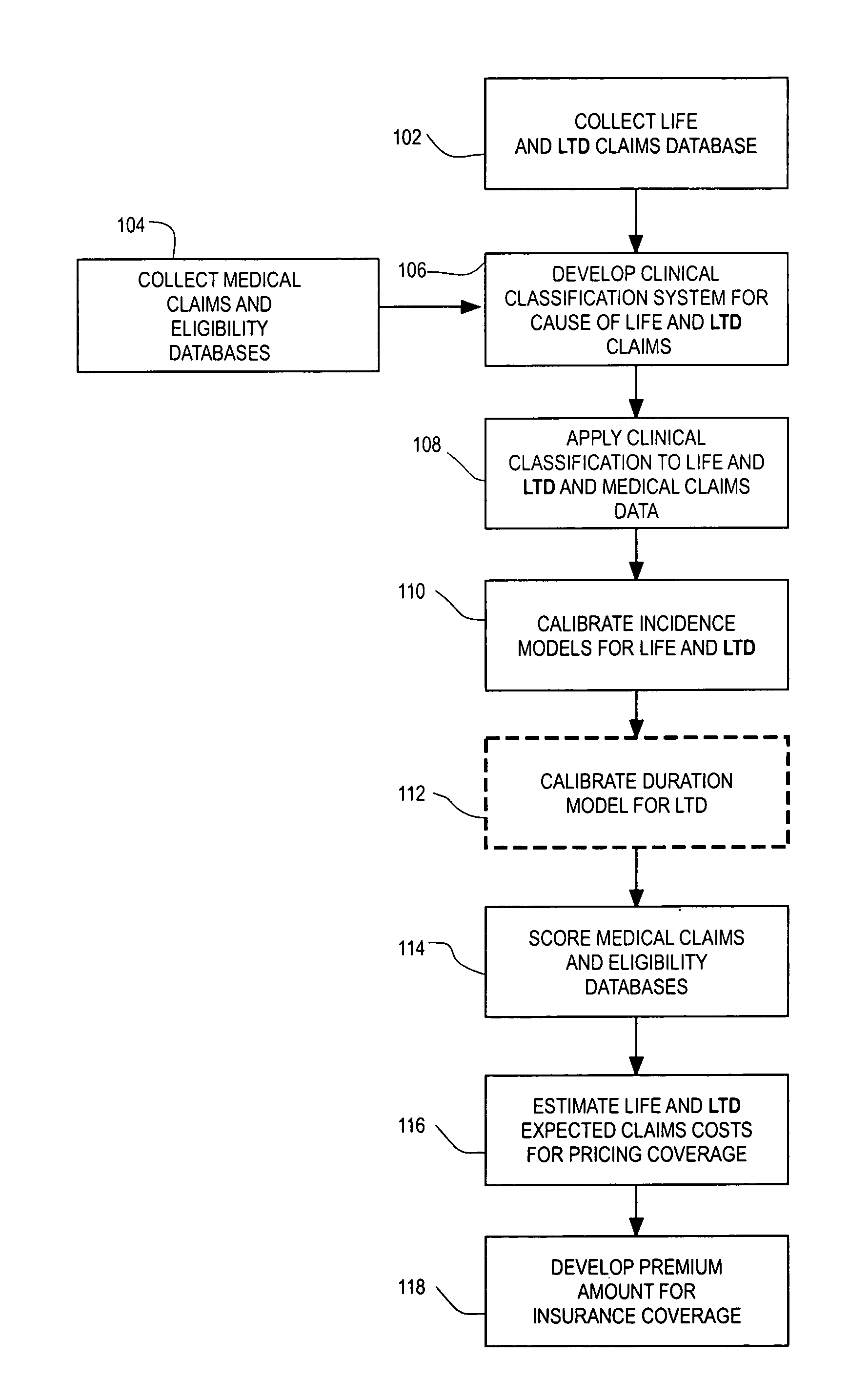Computerized medical underwriting of group life and disability insurance using medical claims data
a technology of disability insurance and medical claims, applied in data processing applications, climate sustainability, finance, etc., can solve the problem that the experience of a group is too small to provide reliable estimates, and achieve the effect of improving the measurement of disability risks
- Summary
- Abstract
- Description
- Claims
- Application Information
AI Technical Summary
Benefits of technology
Problems solved by technology
Method used
Image
Examples
Embodiment Construction
I. Incidence Rate Calculations for Disability
[0022]Although the present invention is susceptible of embodiment in various forms, there is shown in the drawings and will hereinafter be described a presently preferred embodiment with the understanding that the present disclosure is to be considered an exemplification of the invention and is not intended to limit the invention to the specific embodiments illustrated. Accordingly, “disability” is used to refer to either LTD or STD since the same methods can be applied to either insurance product.
[0023]It is to be further understood that the title of this sections of the specification, including but not limited to “Detailed Description of the Invention” relates to a requirement of the United States Patent and Trademark Office, and is not intended to, does not imply, nor should be inferred to limit the subject matter disclosed herein or the scope of the invention.
[0024]Referring to FIG. 1, an exemplary embodiment of the present invention ...
PUM
 Login to View More
Login to View More Abstract
Description
Claims
Application Information
 Login to View More
Login to View More - R&D
- Intellectual Property
- Life Sciences
- Materials
- Tech Scout
- Unparalleled Data Quality
- Higher Quality Content
- 60% Fewer Hallucinations
Browse by: Latest US Patents, China's latest patents, Technical Efficacy Thesaurus, Application Domain, Technology Topic, Popular Technical Reports.
© 2025 PatSnap. All rights reserved.Legal|Privacy policy|Modern Slavery Act Transparency Statement|Sitemap|About US| Contact US: help@patsnap.com



